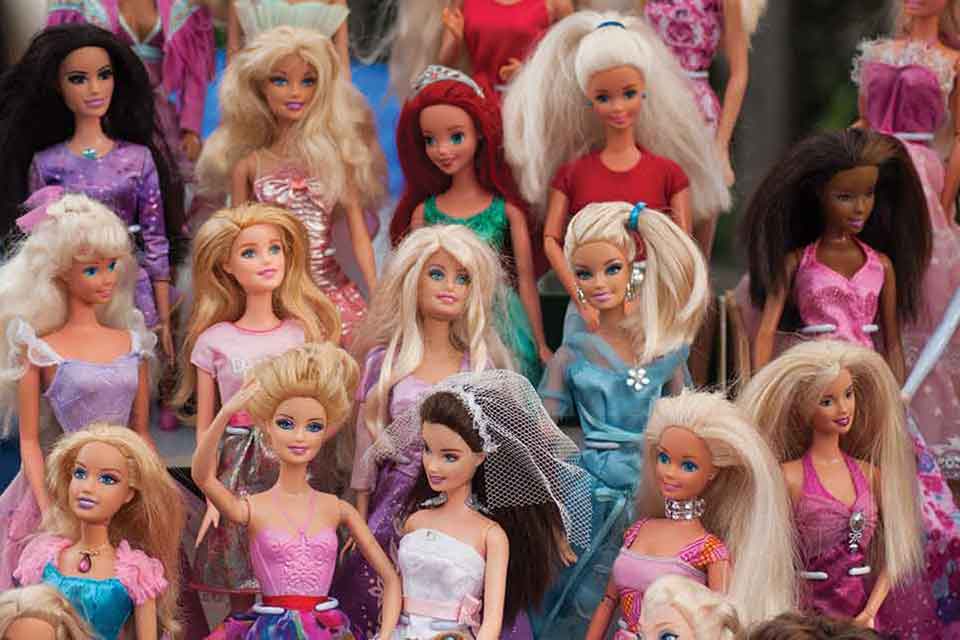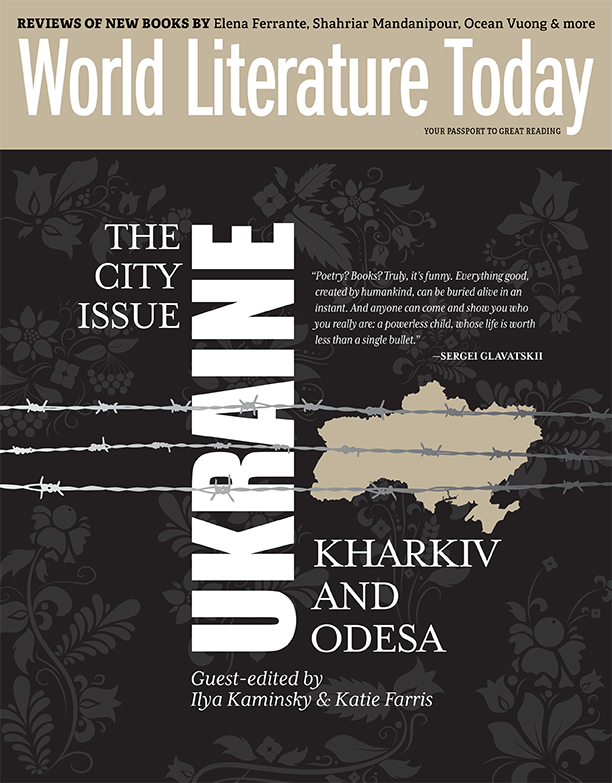Yugoslav Gals and Dolls: A Conversation with Maša Kolanović

I first came across Maša Kolanović’s illustrated novel, Sloboština Barbie (Underground Barbie), written in Croatian and published by VBZ in 2008, as I completed my dissertation in comparative literature. I became absorbed in the world of the novel, in which my own childhood as a Bosnian refugee in Turkey was reflected in many ways. Honing in on the perspective of the narrator’s child self, Underground Barbie tells the story of a girl who accumulates Barbies in the 1990s war in Yugoslavia. Playing with Barbies in the basement of the apartment building, in the underground, mirrors the crumbling social structure of the time—a sense of play as childhood in translation. Politicians are vying to elect new leaders for their “pure” racial state, redefine the concept of citizenship and redetermine who is a “real” Croatian, and displace whole communities based on their new status as “foreign.” Meanwhile, in the Barbie world underground, the children hold presidential elections, host a refugee ball with “disgusting” dolls lesser than “genuine” Barbie, puzzle over the arrival of Black “Tropical Barbie,” discover a mass grave of Ken’s headless mistresses, and more.
It unexpectedly became the first novel I translated. The process offered a release from the peculiar weeds of dissertation writing that I did largely in isolation after leaving St. Louis—the place my family had called home for nearly two decades—for the San Francisco Bay Area. When the pandemic struck, the experience of reading Underground Barbie—a story of isolation, uncertainty, imagination, the politics of naming, capitalism—became even more visceral. Maša and I had spilled much ink about Barbies over the course of the translation project but never formally. In January 2022 we “sat down together” to give form to some of our exchanges.
Ena Selimović: As you wrote Underground Barbie almost fifteen years ago now, how did you understand what Barbies came to mean to you as a child?
Maša Kolanović: Barbies occupied an important, if not central, place in my childhood world of play and imagination. They were the subject of tremendous longing since they couldn’t be bought in Yugoslavia and arrived mostly from relatives abroad. Of course, there were all sorts of Barbie fakes, but even from an airplane you could tell that they weren’t the “real”—meaning Mattel—Barbies. Because they were so rare and precious, Barbies acquired a certain “aura”—long before the obscene levels of consumption that would sweep over this region with the official arrival of free-market capitalism.
Selimović: How did your relationship to Barbies change as we became enveloped in the violence of the war? By “we” in this case, I mean those of us variously tasked with the mostly unavoidable force of “growing up” during this time.
Kolanović: During the war, we would play with Barbies in the basement of our apartment building when the air-raid siren went off. It was a perfect escape from the horrors of the reality of war and a kind of shock absorber for all the panic, the madness, and the fear that accompanied the war. Needless to say, you could never totally escape, not even through Barbie play, so in my stories the wartime reality keeps returning like a boomerang to the glamorous, bright-pink world of Barbies. The end of the war coincided with my entry into teenage years when children’s play became a thing of the past. But Barbie’s “aura” never completely disappeared from my memory, so I felt the need to return to it in my fiction.
During the war, we would play with Barbies in the basement of our apartment building when the air-raid siren went off.
Selimović: When did you first “return” to Barbie?
Kolanović: It happened when I was a university student majoring in comparative literature. In one particular class, we were tasked with choosing a paper topic that would fall under the field of cultural studies. I chose Barbie and threw myself fully into researching the doll as a pop-culture phenomenon. It was the perfect opportunity to think back on my fascination with Barbie and revel in studying my childhood icon in greater depth. I came across Erica Rand’s book Barbie’s Queer Accessories, which examines the subversive uses of the doll, whose potential is in the hands of consumers—those who use the doll—rather than the manufacturers.
Selimović: Was it at this point that the ideas behind Underground Barbie began to crystallize?
Kolanović: I planned to expand that paper into a study of Barbie in Croatia, but as I began brainstorming, I was flooded with my own memories of Barbie play. I started writing them down and quickly lost control of the whole thing—in a positive sense. A new game kicked off, this time not on the stormwater grates in front of our apartment building but in the text, in writing. My memories were thrown out of order as I imagined brand-new scenarios for the game. I had an absolute blast while writing the book, and I hoped readers would one day have as much fun reading it.
The context of the war gave the game a hair-raising quality, where the dolls, who were themselves central protagonists in the text, dramatized the surrounding unpleasantness. In the writing process, Barbie play suddenly took on multiple dimensions, and the book came to describe a (now) historical moment: the breakup of Yugoslavia and the war in Croatia, an unimaginable turn of events in the life of a Barbie doll.
Selimović: And in the life of the one holding the doll. The novel stages how all sorts of children played with Barbies or were at least involved in the Barbie world in some way. Could you elaborate on the cast of characters that populate the novel—both human and doll?
The book avoids romanticizing or idealizing children and the manner in which they play. Both can often be brutal—like childhood itself.
Kolanović: The characters represent a sample of the children you would typically find in a single building situated in New Zagreb. The neighborhood was constructed in the 1980s as a socialist project with the intent to offer decent housing for everyone, regardless of their occupation—or, to put it in socialist jargon, for “workers, peasants, and decent intellectuals.” So, in Underground Barbie, we have children from working families, children of intellectuals, children whose parents came from other parts of Yugoslavia with traces of their regions, children who are “different” and consequently cast off. The book avoids romanticizing or idealizing children and the manner in which they play. Both can often be brutal—like childhood itself.
Selimović: Why dolls? Dolls make recurring appearances in your writing—most recently in “Dolls from Chernobyl,” a short story in your collection Dear Pests and Other Chilling Stories, which Vlad Beronja and I co-translated. When did you realize that Barbies could be the vehicle for communicating how children translate their reality?
Kolanović: In anthropological terms, dolls are a perfect reduction of ourselves. They are humanlike, and yet in our hands they are easily manipulated. When we play with dolls, we seem to have control over them, we breathe life into them, we create them in “our image, our likeness.” Then again, precisely because of their resemblance, dolls also have this eeriness about them, as though we’re not entirely in control after all.

Selimović: Barbie’s sheer presence among the children is narrated in a way both magical and eerie, how they could just feel that “there was something out of this world there, something that must have fallen from the sky.” The image overlaps with the airborne dangers of war, of seeing fighter jets crisscrossing the sky.
Kolanović: And a small shift of perspective into the lush imagination of dolls served as a way to communicate the seriousness and terror of it all. During the war, human bodies in distress were all over TV screens and other media. I associate images of war with images of refugees lined up in columns, people in tears, corpses lying motionless next to houses reduced to rubble, domesticated landscapes. In Underground Barbie, part of that chilling horror returns like a boomerang in my drawings of Barbie bodies. Barbies were created to parade around in glamorous, glittery outfits. No one imagined that their unclothed bodies could allude to human suffering. But to a child in wartime, daily surrounded by such images, it wasn’t a strange association.
No one imagined that Barbies’ unclothed bodies could allude to human suffering. But to a child in wartime, daily surrounded by such images, it wasn’t a strange association.
Selimović: As a mother now, how has it been observing your own daughter play?
Kolanović: What comes to mind is how skeptical my own mother was about letting me play with Barbies. As a 1980s intellectual and feminist, she thought I was wasting my time and that dolls would make me dull.
Selimović: I am just now recognizing the proximity of “dull” and “doll” as I translate our interview into English.
Kolanović: And even so, my mom never prohibited me from playing with Barbies. On the contrary, she helped me sew various things for my dolls. I think it wasn’t until I wrote a book about it that she finally saw that my passion wasn’t a waste, it wasn’t something bad.
With my daughter, I strive to provide a pedagogically liberal atmosphere for her play. However, the context of her play is substantially different from mine and exponentially more so from my mom’s. At present we’re in the midst of consumer capitalism with all its obscene conditions. Our home is inundated with plastic toys like a hurricane. Toys have lost that former aura of uniqueness. Sometimes I’m amazed by the trends in the world of toys—for example, the trend of individually packaging every little doll accessory where unwrapping becomes the main pleasure.
Selimović: Do you worry that play has become “duller” in the abundance of plastic?
Kolanović: In my childhood, I think the lack of that abundance encouraged more creativity, more strategizing to substitute and make the material world of the doll and all those little accessories that we didn’t have and couldn’t buy. I sewed clothes for my Barbies, made cardboard furniture—preparations involved the whole family. Maybe it was precisely Barbie play at that moment in time and under those conditions that led to my passion for making and being creative, and convinced me that a lack of financial resources didn’t necessarily equate to a lack of enjoyment in play.
Plus, childhood is now largely digital—screens are replacing the real world, so much so that children don’t even play, they watch someone on YouTube playing in their place. Still, even in those circumstances and, more generally, considering the many challenging conditions of growing up today, the imagination of children finds a glittering path to break through the imposed frames and come up with something original.
January 2022
 Maša Kolanović’s works include a poetry collection, a novel, a prose poem, and a short-story collection. She also publishes essays on literature and popular culture. Her short-story collection, Poštovani kukci i druge jezive priče (Dear pests and other chilling stories), received the 2020 European Prize for Literature, the Vladimir Nazor Prize for Literature, and the Pula Book Fair Audience Award (Libar za vajk). She is an associate professor in the Department of Croatian Studies at the University of Zagreb.
Maša Kolanović’s works include a poetry collection, a novel, a prose poem, and a short-story collection. She also publishes essays on literature and popular culture. Her short-story collection, Poštovani kukci i druge jezive priče (Dear pests and other chilling stories), received the 2020 European Prize for Literature, the Vladimir Nazor Prize for Literature, and the Pula Book Fair Audience Award (Libar za vajk). She is an associate professor in the Department of Croatian Studies at the University of Zagreb.











